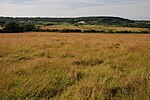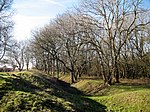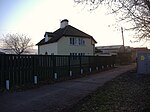Weston-in-Gordano SSSI

Weston-in-Gordano SSSI (grid reference ST452744) is a 12.55 hectare geological Site of Special Scientific Interest near the village of Weston in Gordano, North Somerset, notified in 1993. Note that there is also a separate biological and geological SSSI covering the Gordano Valley. This is a Geological Conservation Review site because temporary exposures here have shown Pleistocene sediments, including interglacial fluvial sands and marine gravels and cold-stage fluvial gravels. Rich molluscan faunas have been reported from the section. The presence of freshwater and marine interglacial deposits gives it great potential importance for the understanding of the Quaternary sequence of the Vale of Gordano and Avonmouth lowlands.
Excerpt from the Wikipedia article Weston-in-Gordano SSSI (License: CC BY-SA 3.0, Authors, Images).Weston-in-Gordano SSSI
B3124,
Geographical coordinates (GPS) Address Nearby Places Show on map
Geographical coordinates (GPS)
| Latitude | Longitude |
|---|---|
| N 51.4659 ° | E -2.79027 ° |
Address
B3124
BS20 8PG , Weston-in-Gordano
England, United Kingdom
Open on Google Maps










